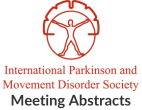Multi-tiered Diagnostic Approaches Reveal a High Degree of Genetic Heterogeneity for Hereditary Cerebellar Ataxias: A Retrospective Review of an Australian Cohort
Objective: A retrospective review of the genetic spectrum in an Australian cohort of hereditary cerebellar ataxia (HCA), as well as evaluating HCA’s testing modalities at…Clinico-genetic correlation in Indian Spinocerebellar ataxia Type 1 (SCA1) patients
Objective: To conduct a clinical and genetic analysis of SCA 1 in Indian population. Background: Spinocerebellar ataxia type1 (SCA1) is a neurodegenerative disease caused by…MicroRNAs Unveil Metabolic Imbalance in Spinocerebellar Ataxia Type-2
Objective: To correlate differentially expressed non-coding microRNA of peripheral blood mononuclear cells (PBMCs) with SCA2 pathogenesis. Background: Spinocerebellar ataxia aype-2 (SCA2), the most common SCA…Evaluation of Balance in Hereditary Ataxias
Objective: To describe and compare the vestibular findings most evident among the hereditary ataxia, as well as correlate their clinical aspects to the study of…Electrophysiological characteristics of tremor in spinocerebellar ataxia type12 (SCA-12) and essential tremor (ET)
Objective: The aim of the study was to describe electrophysiological features of tremor in SCA12 patients and to compare it with that in ET patients.…Treatment with docosahexaenoic acid in Spinocerebellar Ataxia 38
Objective: To evaluate the safety and efficacy of docosahexaenoic acid supplementation in patients with spinocerebellar ataxia 38 (SCA 38), on clinical symptoms and changes of…Spinocerebellar Ataxia Type 2 Presenting with Chorea: Korean Cases
Objective: To report cases of SCA2 presenting with chorea, which have not been reported in Korea Background: Spinocerebellar ataxias (SCAs) manifest ethnic and geographical differences…STN-DBS responsive motor complication and pathological gambling in type IV SCA3
Objective: Background: Type IV spinocerebellar ataxia type 3 (SCA3) could present as pure parkinsonism. A bilateral subthalamic nucleus deep brain stimulation (STN-DBS) has been reported…Deep brain stimulation in a patient with Spinocerebellar ataxia type 2 presenting as Parkinson’s disease: A case report
Objective: The role of subthalamic nucleus - deep brain stimulation (STN-DBS) is well established in medically refractory Parkinson's disease. But the efficacy of DBS surgery…Daughter’s ataxia reveals father’s genetic Parkinsonism. The first reported case of Spinocerebellar ataxia -15 presenting with levodopa responsive hemi Parkinsonism
Objective: A 38 year old Australian florist of Anglo-Celtic origin described two years of difficulty using his right hand with associated sensory disturbance attributed initially…
- « Previous Page
- 1
- …
- 10
- 11
- 12
- 13
- 14
- …
- 16
- Next Page »
